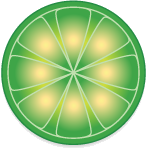
Allow me to take you back to the year 2000. The internet was just breaching into popularity and I was 2 years old at that time. The millenium bug was just avoided and computers started to make their way into more and more households. Additionally in 2000, one of the original open-source programs for music was written and released. I am talking about LimeWire. After my blog on Spotify, I decided to look at more
music platforms, and LimeWire was one of the pioneers in this field (in my opinion).
LimeWire was an open source program that allowed for downloading and sharing music through a P2P (peer to peer) network (Wikipedia 2017). One of the reasons LimeWire is as well-known as it is now is because it was sued and put to a stop a couple of years after being released. Cornered by several lawsuits the company was legally stopped in 2010 (Wikipedia 2017).
A Peer To Peer Network?
“Peer to peer (P2P) refers to a self-organizing computer network of equals in which each computer (which is an autonomous entity) can act as a client or server for the other computers, thus allowing shared access to various distributed resources (e.g., files or peripherals), without the need for a central server.”
Kerric and Sage Publications 2014, 943.
In other words, each computer was equally a server and a consumer, which allowed for an enormous network to emerge. The more participants in the P2P network, the more data became available for all peers in said network (Harvey and Sage Publications 2014, 943). This all sounds really great, sharing content with each other, being equally part of demand and supply. However, the big obstacle that hindered the continuity of the P2P-sharing concept were copyright violations and piracy (Harvey and Sage Publications 2014, 943). I think that running all transactions through one central server could have prevented some of the copyright violations, as a P2P network can escalate quickly (and also share illegal files).
LimeWire was not the first P2P network that entered (and exited) the digital realm. According to the Encyclopedia of Social Media and Politics, the first P2P network appeared in the 1990s (Harvey and Sage Publications 2014, 943). Napster, the true pioneer in the field of media file sharing (1999) also ran into copyright violation issues (Harvey and Sage Publications 2014, 943). Nowadays, there are still networks that are in some way based on a P2P network, but only use the P2P model. For example Skype and BitTorrent share a piece of P2P technology (Harvey and Sage Publications 2014, 943), without the copyright issues or a threat to their continuity.
All in all, as a 90s kid, I am still grateful that LimeWire was around in the time where music distribution was not at the stage where it is now. Even though the piracy and copyright violations are severe and should have been prevented, LimeWire brought opportunities and an early form of sharing music and other media files through a network. At that time people were simply using the software that was available. And you know what they say: When life gives you limes…
References
- Harvey, Kerric, and Sage Publications. 2014. Encyclopedia of Social Media and Politics. Thousand Oaks, California: SAGE Publications, Inc.
- Wikipedia contributors, “Limewire,” Wikipedia, The Free Encyclopedia, https://en.wikipedia.org/w/index.php?title=LimeWire&oldid=862219673 (accessed October 15, 2018).



Recent Comments